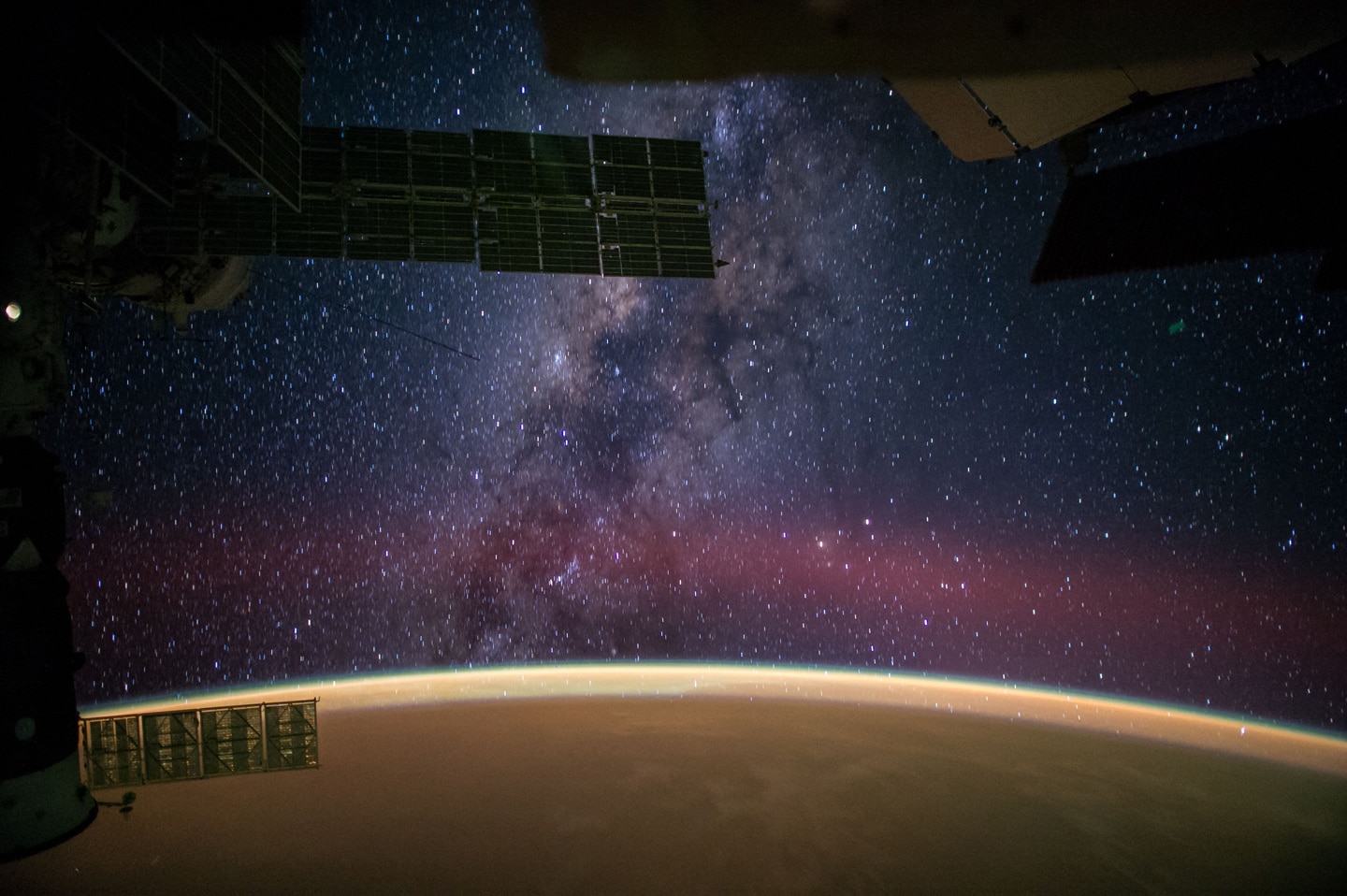Create a free profile to get unlimited access to exclusive videos, sweepstakes, and more!
Our Solar System and Galaxy … Seen by an Astronaut

First off, let’s get this straight: If you use Twitter, you should be following space station astronaut Reid Wiseman. He posts amazing photos all the time, and your life will be the better for it.
For example, on Sept. 28, while orbiting over the Sahara Desert, he took this stunning photo:
If that doesn’t take your breath away, then please, give me a moment to explain what you’re seeing.
The sky is dominated by the glow of the Milky Way, the combined might of billions of stars, faded only by the terrible distances of interstellar space. Our galaxy is shaped like a great, flat disk, 100,000 light-years across, with a central spherical hub of stars swelling out from the middle. Wiseman was facing in this direction when he took this photograph, so the hub can be seen bulging out in the center.
The dark lanes, filigreed and branching away, are literally space dust, large grains of complex organic compounds called polycyclic aromatic hydrocarbons—essentially soot. They litter the galaxy, strewn across it as stars are born, and as they die. The dust is opaque, so it blocks the light of stars behind it. You are literally seeing the silhouette of smoke blown out from the life cycle of stars, scattered across a million billion kilometers.
You can see a few clusters of stars, looking like fuzzy puffs here and there. There are also thousands of stars in the photo, including the bright red supergiant Antares, the heart of Scorpius, just to the right of the center of the picture. You may note it looks blurred; to get the fainter Milky Way in the photo, Wiseman had to take a time exposure. During the exposure the space station moved eight kilometers every second around the Earth. The stars streak a bit during that time.
Closer to home, the bright red dot next to Antares is Mars. Yes, the planet, where we humans have currently more than a half-dozen robots flying or roving over the surface.
Below that is the eerily lit and ruddily colored edge of the Earth. The Sahara Desert makes its hue known. The thin red and green glowing arc above the Earth’s limb is called airglow, and is due to complicated chemical processes occurring about 100 km over the surface, as molecules release the energy they absorbed from the Sun during the day.
Note that well: You can see the curve of the ground, the horizon, in the photo, and just how thin our atmosphere is from this vantage point. It’s a narrow, delicate, fragile shell surrounding us, and yet it allows all life to exist.
And that basic truth is belied by the framework of this photo: The space station itself, modules and docked spacecraft pointing to the fact that we have managed to leave this Earth, if only for a short distance and small span of time.
It’s not easy, this exploration of space, but we can do it. We have the intelligence, the ability, the imagination needed to see where it will take us. All we need is the will. I think we have that too, when we are at our best.
So. If that photo didn’t take your breath away when you first saw it, please take a second look. The whole Universe, our entire future, is framed in that picture, taken by a man who happened to be in the very right place at the very right time.


























